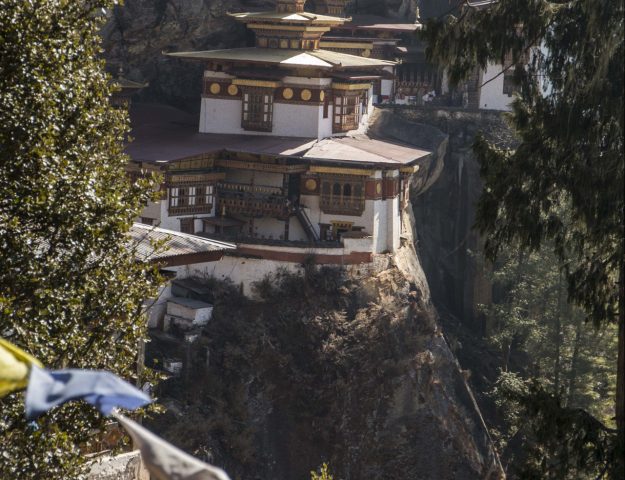Still full of the festival impressions we headed back to Rangjun where we stopped to wander around this little but very picturesque village.
The Main Street is lined with several general stores that offer anything you would need here from food to cooking utensils and tools. Seemingly every store offers the same merchandise so it’s puzzling to us how they each distinguishes themselves from each other. Something to ask Norbu.
Rangjun – a typical Bhutanese village
All the villages and houses are built in the same style, lived along one main road and never more that two-storeys high. The houses are made of bricks or rocks and wooden beams and windows. Glass windows are rare, instead windows either stay open or when too cold the get boarded up with wooden panels. Some houses are elaborately painted, others a austere white/grey/natural wood mix. It’s nice to see no ugly new concrete buildings. Bhutanese law requires each builder to respect local tradition and to build accordingly.
In Rangjun we also visited the local temple and monastic school. Large prayer wheels are always present and everyone is encouraged to turn those – clockwise only! That makes some bells chime to alert the spirits and supposedly brings good luck. The prayer wheels range from tiny drum wheels to gigantic ones, each painted or carved with a mantra that repeats all over that wheel. You find them also at the entrance of many shops.
Back to Trashigang
Our final stop of the day is Trashigang village and there we could watch the national sport of Bhutan – archery. While only men usually shoot bows, a fun fact is that it was a female archer (Reena Kumari) that first won a match at the Olympics 2004.
Arriving home at our very nice hotel on top of the mountain ridge overlooking the dzong here some impressions of this beautiful place.










